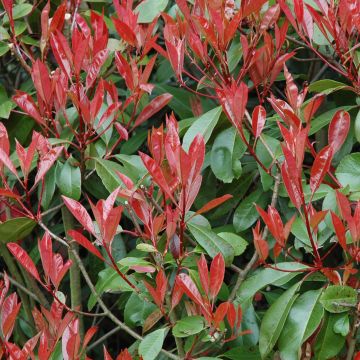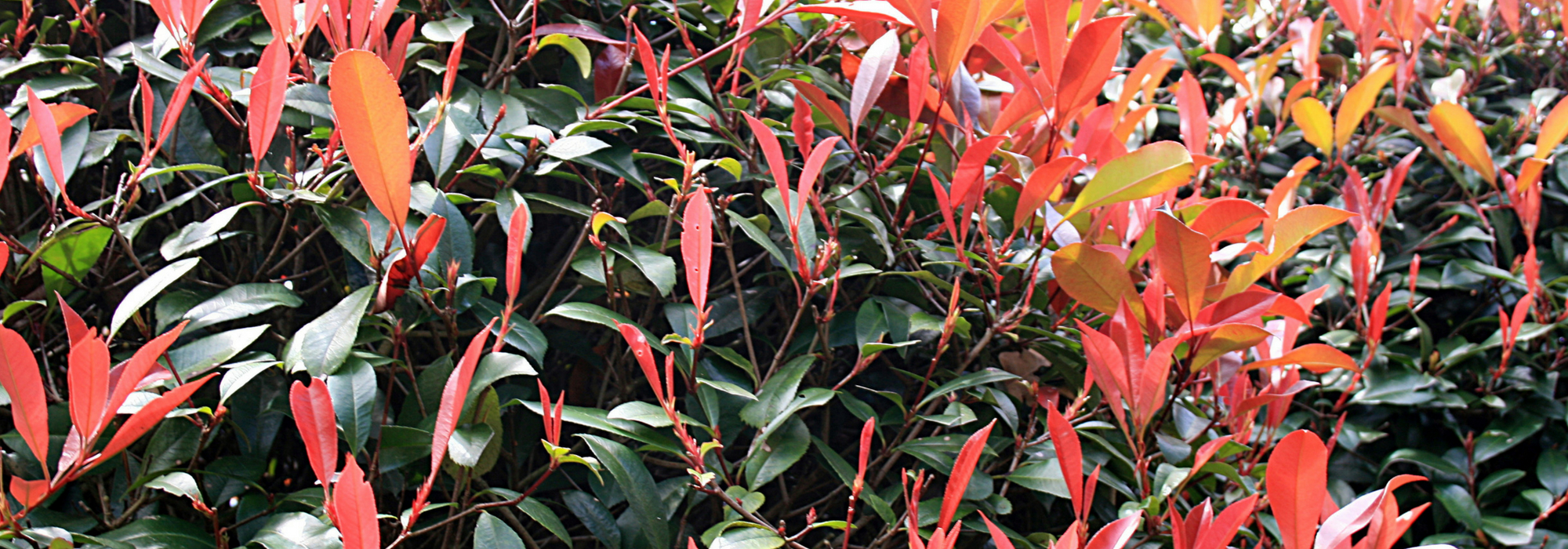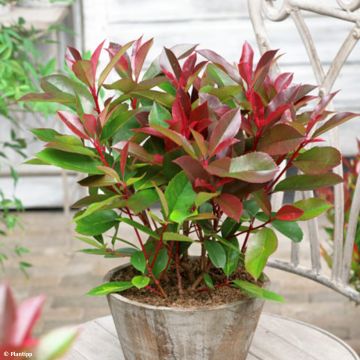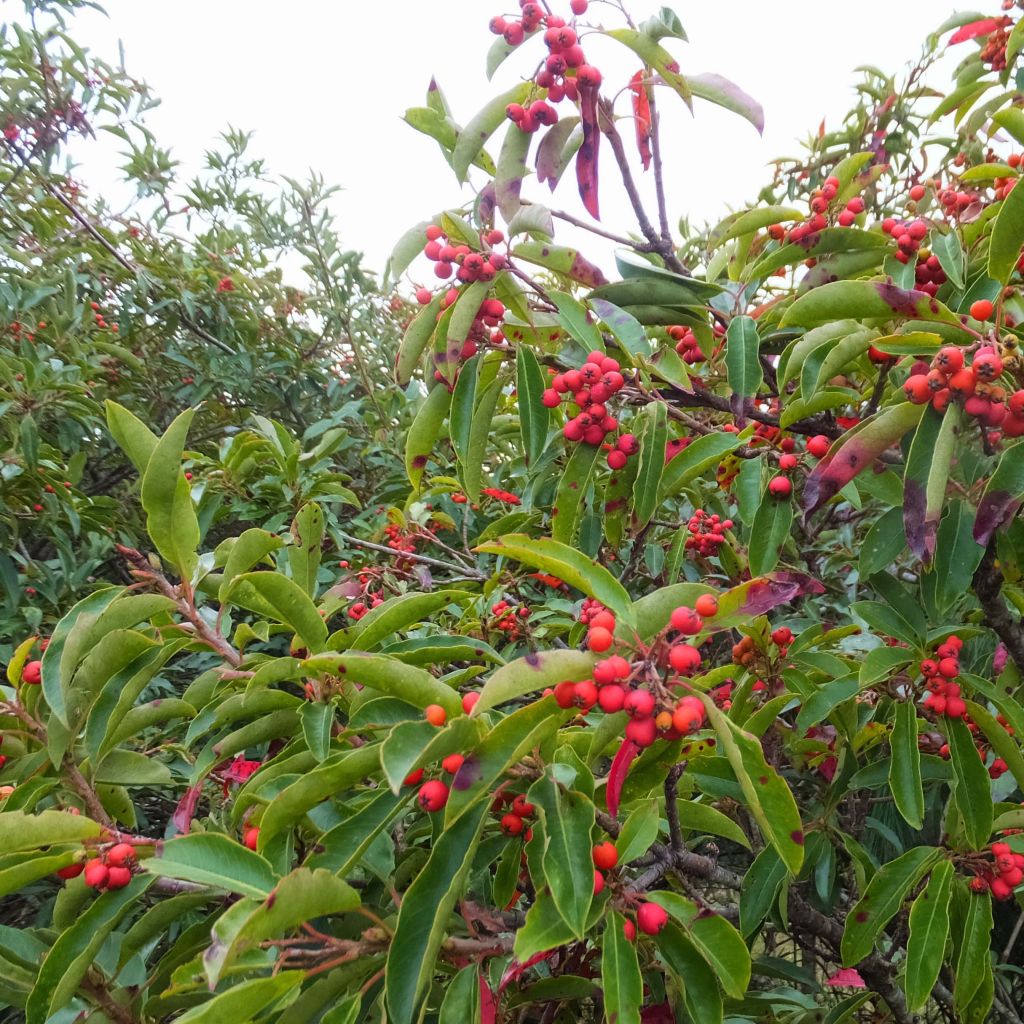

Photinia niitakayamensis


Photinia niitakayamensis
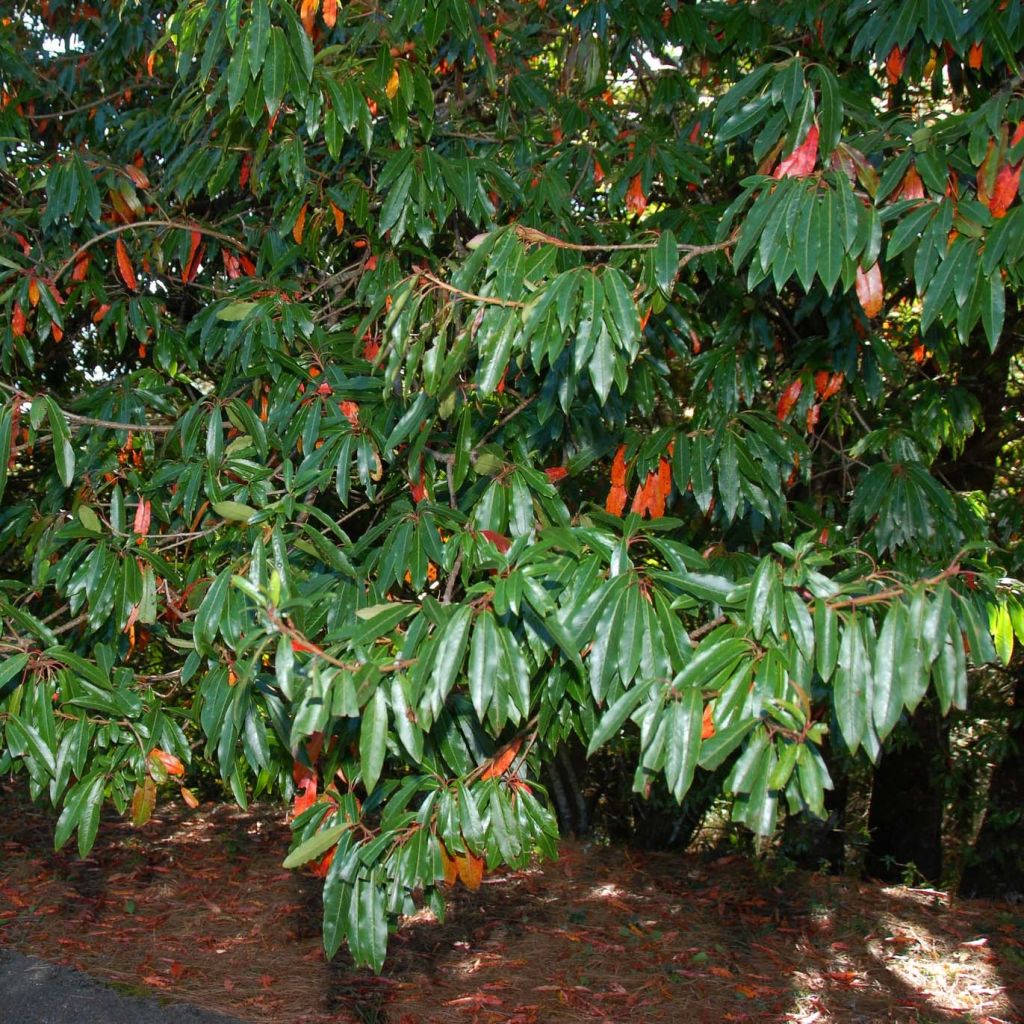

Photinia niitakayamensis
Photinia niitakayamensis
Photinia niitakayamensis
Special offer!
Receive a €20 voucher for any order over €90 (excluding delivery costs, credit notes, and plastic-free options)!
1- Add your favorite plants to your cart.
2- Once you have reached €90, confirm your order (you can even choose the delivery date!).
3- As soon as your order is shipped, you will receive an email containing your voucher code, valid for 3 months (90 days).
Your voucher is unique and can only be used once, for any order with a minimum value of €20, excluding delivery costs.
Can be combined with other current offers, non-divisible and non-refundable.
Why not try an alternative variety in stock?
View all →This plant carries a 24 months recovery warranty
More information
We guarantee the quality of our plants for a full growing cycle, and will replace at our expense any plant that fails to recover under normal climatic and planting conditions.
Would this plant suit my garden?
Set up your Plantfit profile →
Description
The Photinia niitakayamensis is an endemic photinia in Taiwan with small leaves that are more or less evergreen in winter and distinguishes itself with its more refined appearance than traditional varieties. This species is still rare in cultivation; will charm with the fine and glossy texture of its foliage, which often turns red in autumn, and its generous long-lasting clusters of red fruits towards the end of the season. With moderate growth, this photinia will find its place in a free hedge, but can also be planted as a standalone specimen. Provide it with a rather sunny exposure and good fertile garden soil that is deep and not too dry.
The Photinia niitakayamensis, formerly classified as Stranvaesia, is a bush of the rose family recently introduced into cultivation in European botanical gardens. It is native to the high mountains of Taiwan and can withstand temperatures as low as -12/-15°C once well established. With relatively slow growth, this photinia has a bushy and well-branched habit. At maturity, it will reach an average height of 3m (10ft) with a width of 2m (7ft). Its shiny branches bear small, thick and leathery leaves that are narrow and elongated, slightly undulate, and of a bright green color, often turning red in cold weather. Flowering occurs in May-June in the form of small umbel inflorescences adorned with small white flowers with a slight fragrance, which are highly visited by pollinating insects. After pollination, the flowers give way to small round fruits measuring 5 to 8mm (1in) in diameter, changing from green to yellow to orange, and finally turning red at the end of summer. The foliage will persist if the winter is mild, but will fall more or less in other cases.
Create a superb mass of refined-looking shrubs with this Photinia that remains interesting all year round: for example, combine it with witch hazels, andromedas, Taiwan rowans, Japanese maples, flowering dogwoods, and large Chinese azaleas. This photinia, which does not tolerate drought or excessive limestone, will also thrive alongside hydrangeas or Hydrangea aspera. With its bushy habit and modest size, it is also perfectly suited for forming medium-height free hedges with other evergreen hedge shrubs, creating a magnificent screen with changing colors.
The genus name Photinia is derived from the Greek word photeinos, meaning bright or luminous, in reference to their glossy foliage.
Photinia niitakayamensis in pictures


Plant habit
Flowering
Foliage
Botanical data
Photinia
niitakayamensis
Rosaceae
Southeast Asia
Other Photinias
View all →Planting and care
The Photinia niitakayamensis thrives in full sun or partial shade, in deep, fertile soil, preferably neutral to acidic (at least without excessive limestone), moist but well-drained. It fears overly dry soils and highly compacted clay soils. Planting is preferably done in autumn to promote root growth, or in spring in our well-watered regions. To help it establish, provide 20 liters of water every 15 days during the first summer following planting, in case of a dry summer. A spring application of well-decomposed compost will benefit it, improving its growth and making its foliage more abundant and colorful. Hardy, it can tolerate temperatures down to -12/-15°C (10.4/5°F) once well-established, after 2 or 3 years of cultivation. It also tolerates pruning, but this operation may compromise flowering or fruiting.
Planting period
Intended location
Care
Planting & care advice
This item has not been reviewed yet - be the first to leave a review about it.
Similar products
Haven't found what you were looking for?
Hardiness is the lowest winter temperature a plant can endure without suffering serious damage or even dying. However, hardiness is affected by location (a sheltered area, such as a patio), protection (winter cover) and soil type (hardiness is improved by well-drained soil).

Photo Sharing Terms & Conditions
In order to encourage gardeners to interact and share their experiences, Promesse de fleurs offers various media enabling content to be uploaded onto its Site - in particular via the ‘Photo sharing’ module.
The User agrees to refrain from:
- Posting any content that is illegal, prejudicial, insulting, racist, inciteful to hatred, revisionist, contrary to public decency, that infringes on privacy or on the privacy rights of third parties, in particular the publicity rights of persons and goods, intellectual property rights, or the right to privacy.
- Submitting content on behalf of a third party;
- Impersonate the identity of a third party and/or publish any personal information about a third party;
In general, the User undertakes to refrain from any unethical behaviour.
All Content (in particular text, comments, files, images, photos, videos, creative works, etc.), which may be subject to property or intellectual property rights, image or other private rights, shall remain the property of the User, subject to the limited rights granted by the terms of the licence granted by Promesse de fleurs as stated below. Users are at liberty to publish or not to publish such Content on the Site, notably via the ‘Photo Sharing’ facility, and accept that this Content shall be made public and freely accessible, notably on the Internet.
Users further acknowledge, undertake to have ,and guarantee that they hold all necessary rights and permissions to publish such material on the Site, in particular with regard to the legislation in force pertaining to any privacy, property, intellectual property, image, or contractual rights, or rights of any other nature. By publishing such Content on the Site, Users acknowledge accepting full liability as publishers of the Content within the meaning of the law, and grant Promesse de fleurs, free of charge, an inclusive, worldwide licence for the said Content for the entire duration of its publication, including all reproduction, representation, up/downloading, displaying, performing, transmission, and storage rights.
Users also grant permission for their name to be linked to the Content and accept that this link may not always be made available.
By engaging in posting material, Users consent to their Content becoming automatically accessible on the Internet, in particular on other sites and/or blogs and/or web pages of the Promesse de fleurs site, including in particular social pages and the Promesse de fleurs catalogue.
Users may secure the removal of entrusted content free of charge by issuing a simple request via our contact form.
The flowering period indicated on our website applies to countries and regions located in USDA zone 8 (France, the United Kingdom, Ireland, the Netherlands, etc.)
It will vary according to where you live:
- In zones 9 to 10 (Italy, Spain, Greece, etc.), flowering will occur about 2 to 4 weeks earlier.
- In zones 6 to 7 (Germany, Poland, Slovenia, and lower mountainous regions), flowering will be delayed by 2 to 3 weeks.
- In zone 5 (Central Europe, Scandinavia), blooming will be delayed by 3 to 5 weeks.
In temperate climates, pruning of spring-flowering shrubs (forsythia, spireas, etc.) should be done just after flowering.
Pruning of summer-flowering shrubs (Indian Lilac, Perovskia, etc.) can be done in winter or spring.
In cold regions as well as with frost-sensitive plants, avoid pruning too early when severe frosts may still occur.
The planting period indicated on our website applies to countries and regions located in USDA zone 8 (France, United Kingdom, Ireland, Netherlands).
It will vary according to where you live:
- In Mediterranean zones (Marseille, Madrid, Milan, etc.), autumn and winter are the best planting periods.
- In continental zones (Strasbourg, Munich, Vienna, etc.), delay planting by 2 to 3 weeks in spring and bring it forward by 2 to 4 weeks in autumn.
- In mountainous regions (the Alps, Pyrenees, Carpathians, etc.), it is best to plant in late spring (May-June) or late summer (August-September).
The harvesting period indicated on our website applies to countries and regions in USDA zone 8 (France, England, Ireland, the Netherlands).
In colder areas (Scandinavia, Poland, Austria...) fruit and vegetable harvests are likely to be delayed by 3-4 weeks.
In warmer areas (Italy, Spain, Greece, etc.), harvesting will probably take place earlier, depending on weather conditions.
The sowing periods indicated on our website apply to countries and regions within USDA Zone 8 (France, UK, Ireland, Netherlands).
In colder areas (Scandinavia, Poland, Austria...), delay any outdoor sowing by 3-4 weeks, or sow under glass.
In warmer climes (Italy, Spain, Greece, etc.), bring outdoor sowing forward by a few weeks.
































